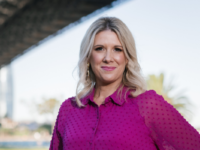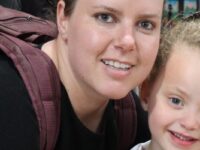Females in Food aims to improve representation of women in the food & beverage industry, and has used technology to rise through the ranks.
Chelsea Ford launched Females in Food almost five years ago in order to bring women throughout the food & beverage industry together as a community, to advocate for and forward their interests. Having worked for food giants such as Kellogg’s and Nestlé, Chelsea saw first-hand the need for better female representation in the industry, so she designed her new business as a network for women within the sector to connect, share and create. Through events, content production and advice, Chelsea set out to address the issue of the underrepresentation of women at management level.
Entrepreneurial notions of “iterate, iterate, iterate” and “fail fast” defined Chelsea’s approach to content creation for the venture, focusing on accepting feedback quickly and producing professional content.
The result has been rapid growth from the outset, with the Females in Food community now encompassing women in F&B not just across the length and breadth of Australia, but also around the world. It also led to Chelsea being voted one of our Top 50 Small Business Leaders in the first iteration of the report in 2017, within a year of her launching the business.
We spoke to Chelsea about the challenges of scaling the business up so quickly, and how technology has helped in overcoming them.
ISB: How has your operating model developed in the couple of years since you featured in the inaugural Inside Small Business Top 50 Small Business Leaders Report?
CF: Females in Food has gone from strength to strength over the last few years – and it has also gone through a lot of change.
“Females in Food has been built, and maintains its reach, almost entirely thanks to technology.”
When I launched in the spring of 2016, the business model was a pay-by-the-month membership. I focused on early-stage food and drink artisans and small-business owners because there was a gap in the market where women who were incredibly creative did not always feel confident building a business that would support them long term.
What I noticed, however, was that on the whole, early-stage food or drink small-business owners often stayed in the dreaming stage and that was not commensurate with what I wanted to teach.
I had a global career working for food manufacturers and owning my own food business, so I wanted to share my knowledge and passion for good growth. So, in 2019, I pivoted and began to make significant structural changes to target more sophisticated food-and-drink businesswomen.
This year I took that to another level by launching a coaching program called Foodpreneurs Formula® to help women in food and drink navigate their growth journey. The most significant thing about this program is that it addresses all the major hurdles that women in food and drink face, while helping them build formidable businesses that pay them a great wage. I love it because it can be accessed by women no matter where they are located, because if there is one thing I’ve learnt for sure, the struggles women foodpreneurs face here in Australia are the same all over the world.
ISB: Technology has moved on since you started the business – which platforms and back-office systems do you use today?
CF: Females in Food has been built, and maintains its reach, almost entirely thanks to technology.
I use many applications but the three I absolutely can’t live without are:
- WordPress: the content management system that both my websites are built on. I have a public facing website, www.femalesinfood.com, and a sub domain for my learning management system (built on LearnDash), that my members use to access all the modules for my Foodpreneurs Formula® program.
- Zoom: for video and audio conferencing. It’s where I conduct all my live coaching and “hot seat” sessions to make sure my members get the most out of the program. I love it because I also record all my sessions, so those who can’t make it live can access the coaching at their convenience.
- Stripe: a payment processor that accepts payments globally.
And another one I’ve just started using is Deadline Funnel for evergreen marketing funnels. I’m loving it, but it’s still early days so there’s more potential to uncover with that one.
ISB: Collaboration and networking are a big part of Females in Food, so how did technology help you cope with COVID-19 preventing you from delivering any coaching or mentoring in person?
CF: The pandemic did inhibit face-to-face connection but my online coaching went from strength to strength. I had already set up the business coaching online and that just strengthened during the period.
We are a global organisation and were already set up to deliver to a global audience and this became stronger.
A year before the pandemic I decided to reduce the face-to-face networking component for the time being as it was keeping us locked to Australia and I did not want that. We already had members from across the globe, so I did not want to alienate them by presenting “live” events in Australia only. It turned out to be a good decision!
ISB: You started the business to address the underrepresentation of women in the food & beverage industry – what advances have been made in that respect, and what changes are you still looking to drive in the industry?
CF: It’s a work in progress. The reality is, women in food and drink continue to struggle with financial prosperity, but I’ve focused on increasing the commercial prowess of thousands of foodpreneurs over the last few years, so I’ve made inroads in changing the “struggling artist” mentality.
Many of the women I work with come to me not ever having paid themselves a decent wage, nor are they in a position to scale their business – they are stuck. So I have, and will continue to make it a priority to ensure women have more impact, in their own lives and across the industry. It is the most important aspect of what I do, and why I do it.
ISB: How do you see the business developing in the next couple of years, and what role will technology play in those plans?
CF: My mission is to see all women foodpreneurs flourish, no matter where they are located. I want to help them attract more customers, make bigger profits and have more certainty and freedom in their lives – so over the next couple of years, I want to see a lot more of that.
For me to achieve that mission, technology will have to play a big part. Females in Food is across four continents now, and I am looking to be in the rest – maybe with the exception of Antarctica! – within the next 12 months.
This story first appeared in issue 31 of the Inside Small Business quarterly magazine
















